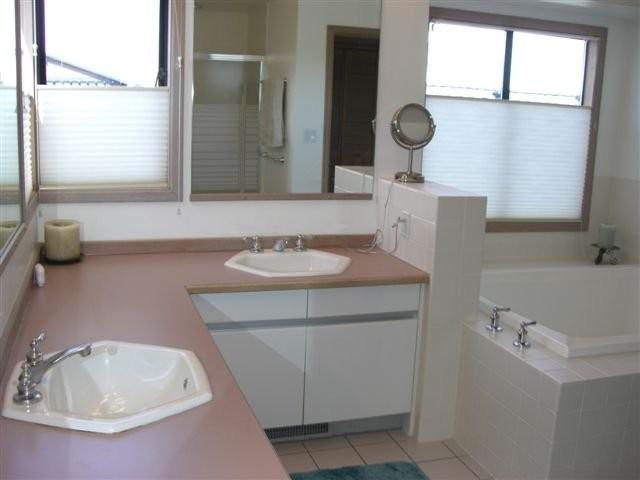TEMPTATION BY DESIGN
You probably don't realize it, but the same tricks used in grocery stores to entice you to spend more are used in showrooms for construction materials and products. In a grocery store, the sugary cereal is placed at childrens' eye level to grab their attention (and begin the begging process). The guilty-pleasure cereals that camouflage as healthier options are at adult eye level. And, the really healthy stuff? On the top or very bottom shelf, collecting dust.
When you walk in a showroom, the most popular luxury goods will be front and center, and you will surely find yourself in "love" with some expensive (and probably trendy) goodies.
THE LABOR FACTOR
With any construction material, the cost of labor must be included to determine the actual price difference. Labor rates can sometimes eclipse the unit cost savings.
Example:
When selecting the backsplash for the kitchen at our Laurelhurst project, we immediately loved the classic look of the 1x3 statuary white marble herringbone pattern mosaic tile. But, at about $21 per square foot, the material cost was significantly more than a $4 per square foot matte white subway tile we also liked.
So, we came up with two options:
Option 1- All herringbone mosaic
Option 2 - Inexpensive white subway tile with matching trim pieces and a narrow accent band of a marble tile
We asked our general contractor to give us a total installed price for both options. Surprisingly, the additional labor to install the less expensive tile made Option 2 MORE expensive than Option 1. The labor to install each piece individually, plus additional time to determine the best layout in the field (to minimize small pieces), more than closed the price gap of the materials per square foot. This would not have been true if Option 1 also required piece-by-piece installation and fussy layout calculations in the field, but since the herringbone mosaic came mounted on a mesh in 12"x12" interlocking pieces, the labor factor was significantly less.
PURCHASE INCREMENTS AND SUBCONTRACTOR LIABILITY
Some materials have an even larger price difference between the material cost and the total installed cost. One reason is that some items must be purchased in certain increments, regardless of the amount needed -- such as certain tiles that are sold by the box and stones that are sold in whole slabs.
When fragile or difficult to fabricate materials are being handled and shaped, there will also be a liability factor in the subcontractor's pricing. After all, if they break the slab, they will have to purchase and fabricate a replacement.
Example:
Upgrading to manufactured quartz from plastic laminate may seem like a small splurge if you rely upon square foot costs to make your judgment (see the yellow highlighted cells in the spreadsheet, below). However, once labor, fabrication, and mark-ups are added, the multiplier is much higher (green cells vs. yellow cells, below).
You may also have to purchase more slabs because of the shapes of un-spliced pieces required that can be cut from a single slab. In contrast, plastic laminate can be continuously applied to a substrate in much longer pieces, so a purchase increment is less likely to trigger a significant overall price swing.
HOW TO STAY FOCUSED
Appointments are recommended (and required at many showrooms) so that you get individualized attention and answers to your questions, but you will have a true insider's advantage when your architect/designer is either by your side or has called to brief the salesperson regarding the design objectives and budget expectations before your appointment.
If you find yourself captivated by a more expensive option, collect the information needed to price it, but spend time to find a less expensive option that would also work, keeping labor, purchase increments, and subcontractor liability in mind.








